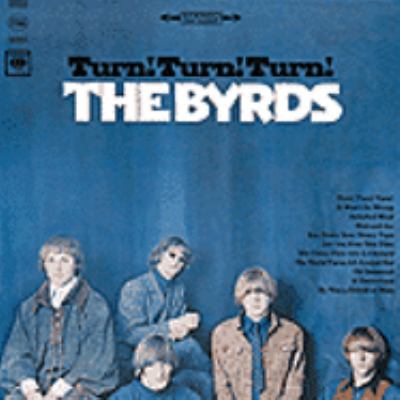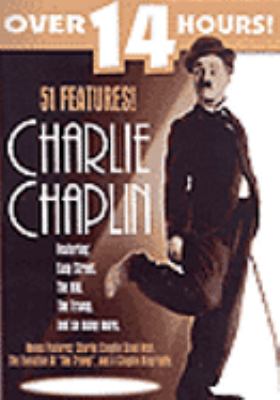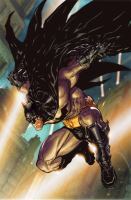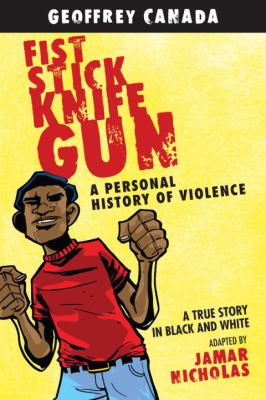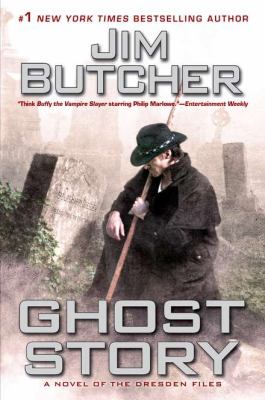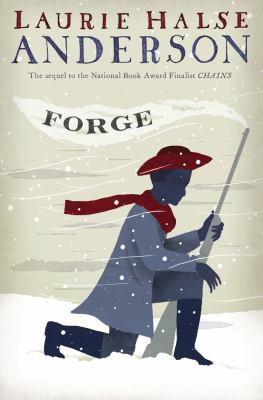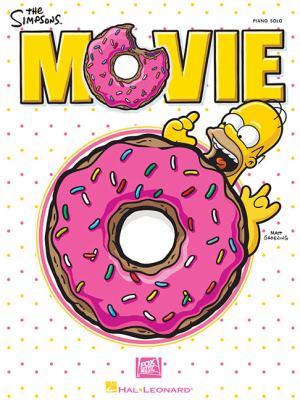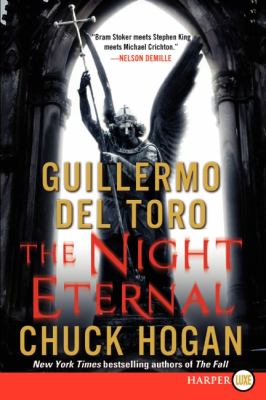Free music for you to own legally is now available at Queens Library thanks to our new partnership with Freegal. The name Freegal comes from “free and legal” and they offer three songs a week to Queens Library cardholders from the Sony Music Entertainment catalog. For more information about Freegal, use the FAQ on the site.
Most music shoppers search by artist, so my first Freegal tip is to use the alphabetical search function on the bottom right of the homepage rather than the search box or the advanced search in the upper-right corner. While all three will work, only the alphabetical search at the bottom of the homepage will show the results with album artwork, release dates, running times, and information other than artist, album title, and track name. Also, be aware that articles such as “the,” “a,” and “an” are considered to be part of an artist’s name, so The Byrds would be found under “T,” not “B.” Also, solo artists are listed by their first name so Michael Jackson is listed as “M,” not “J.” Try the same search with all three search options and see for yourself which one you prefer.
My favorite recent discovery and recommendation was found scrolling through the “T’ section. I’ve been following The Chesterfield Kings since the late 1980’s and was sort of amazed that I saw them listed on Freegal, since I thought they weren’t signed to any Sony label I knew. It turns out that their current label, Wicked Cool Records, is now being distributed by Sony. This is great news for me since Wicked Cool is owned by “Little” Steven Van Zandt (of E-Street Band and Sopranos fame), who also runs my favorite satellite radio station, Little Steven’s Underground Garage. Many of the modern bands played on the station are also distributed on Wicked Cool, so now I have a ton of music already in my wish list for future downloading. If you enjoy 1960’s style garage punk and psychedelic music, give The Chesterfield Kings and other Wicked Cool artists a try. Click on the blue arrow next to a song title to get a 30 second preview and decide for yourself. If that’s not your style, search Freegal and tell us what you found that made you jump for joy.
As The Chesterfield Kings would say, it’s outtasite!
Want a free and legal way to expand your music collection? All you need is a Queens Library card! All card holders are now eligible to download three free songs a week. Have your library card number and PIN handy? Head here and get instant access to hundreds of thousands of songs from the Sony Music catalog. Search for your favorite artists and song titles, sample 30-second previews of tunes and click download. It’s as simple as that. The best part? Any title you download is yours to keep! Plus, you can transfer the music to any computer or MP3 player or even burn it to a CD. Enjoy!
P.S. If you’re not a card holder already, you can sign up for a free Queens Library card online!
Tags
As true cinephiles, we’re glad to see silent films making a small, but significant comeback with the 2011 Academy Award winner for Best Picture, The Artist, a French-American production that has already won a number of accolades and looks poised to pick up a few Academy Awards as well. What makes The Artist unusual is that it is shot in black and white and has no spoken dialogue. That’s right, a silent film (which has a musical accompaniment, but let’s not quibble), released in the age of reality TV, talking animals on YouTube, and, frankly, a lot of noise.
If you think that silent movies — most of which were made before you were born — can’t be any good, think again. Practically every popular movie today contains a joke, a stunt or an entire scene that originated in the days of silent cinema. A pie in the face, hanging off the minute hand of a clock tower, and smashing a vehicle into a fruit cart have all been standard-issue since the first film reels made their way out of the Edison Studios in New Jersey. New York City residents take note: Our home, especially Coney Island, also had a starring role in many silent films alongside Charlie Chaplin, Buster Keaton, Harold Lloyd, and Fatty Arbuckle. Just seeing scenes of NYC in the early part of the 1900s is worth the trip to your local Queens Library and asking what DVDs of silent films they have on the shelf. Just about every branch of the Queens Library has some to offer.
Still not convinced about giving silent films a try? I used to DJ at a small club in Philadelphia, and I’d always show a silent film on the TV behind the bar. People who didn’t want to dance always became engrossed with the movie because they didn’t need the sound to understand what was happening. Quite often, the music I played would work so well with the onscreen action that many watchers thought I had synced the whole thing. Try it yourself. Borrow a silent movie from the Queens Library, turn down the sound on the TV and turn up the sound on your music system. You’ll be amazed at how both the movie and the music complement each other in ways you didn’t expect.
You may think you’ve seen all the good DVDs at your local Queens Library, but try something older than you for a new perspective. Even movies can get better with age.
Tags
“Shut it down? By the end of tonight, I will be a hero, just like you … Batman.” These are the words spoken by Hugo Strange during the title screen of Batman: Arkham City, but it isn’t Batman he’s speaking to — it’s Bruce Wayne, who is handcuffed to a chair and about to be thrown into the eponymous prison.
Rocksteady Studio’s Batman: Arkham City is the sequel to 2009’s smash hit Batman: Arkham Asylum, and, like its predecessor, this game is written by Paul Dini, one of the leading minds behind Batman: The Animated Series, and has Kevin Conroy and Mark Hamil once again reprising their roles as Batman and the Joker.
In the aftermath of the attempted breakout in Arkham Asylum, Warden Quincy Sharp has now become mayor of Gotham and has turned a whole chunk of Gotham into a new supermax prison, Arkham City, with Professor Hugo Strange overseeing it. While leading a public campaign to shut the facility down, Bruce Wayne is arrested and thrown in as well. Strange warns him to stay out of his way or he will reveal Wayne’s secret. Of course, a few minutes later you’re suited up in the Batsuit, smack dab in the middle of a turf war between Two-Face, the Penguin, and the Joker, while trying to unravel what Strange has planned, something he calls “Protocol 10.”
For fans of the previous game, as well as the Batman mythos, this game is a masterwork. Arkham City is a massive wide open playground, letting you go where you want, as you want. Yet you never lose the sense of urgency in the game’s main campaign, even as you’re zip-lining and gliding around, saving political prisoners, dealing with other members of Batman’s Rogues Gallery such as Deadshot, Mr. Freeze, and Bane. Batman, however, can’t handle this alone; there are brief portions of the game where control shifts over to Catwoman, letting you try new ways of navigating, stalking, and fighting the multitude of thugs roaming around. Her segments run a bit harder due to her inability to glide and her lower health bar.
The combat has been streamlined even further than with the previous game; with the upgraded ability to counter multiple incoming attacks at once, it becomes much easier to manage the oncoming crowds. Once you get a nice string going, your combat range increases, letting you leap across the screen to hit the next thug rather than losing your chain because he was too far away. It is also much easier to string Batman’s gadgets into the combat combos as well, with refined shortcuts and better reaction time.
Predator mode is just as fun, with old methods and new gadgets. The outdoor segments provide an additional challenge, with fewer places to perch from, forcing you to slink in the shadows and keep moving rather than just lurking and waiting up above. The Enemy AI catches on better now, destroying any gargoyles they see you slinging up to for example.
Gliding around the city takes some getting used to, especially when trying to solve some of the side quests, which require some precision motions, but the skill comes with time and practice and is very enjoyable in its own right. Here’s a tip: Do the first four AR training side quests to upgrade your grappling hook – it helps nicely.
The Riddler’s puzzles and fetch quests return in full force, with 400 individual tasks, most of which are picking up the trophies he’s left around, though now require some sort of physical feat or precise batarang throwing to retrieve. Even gamers who are reluctant to do collectible quests like this may find themselves wanting to do it for one simple reason: The Riddler doesn’t think you can.
Arkham City is a joy to play, and a treasure trove of Batman fandom candy. Everything can be completed in a single play-through at your own pace without the fear of missing anything, save for one single achievement: “Catch” can only be completed while the Watcher in the Wings side quest is active. There is now a “New Game + mode” as a separate menu option, which allows you to start the game over with all your gadgets and with stronger and smarter enemies, without losing access to your postgame playground.
Arkham City is currently out for PS3, XBox 360, and PC. The lead-up graphic novel can be requested at your local Queens Library, and the game can be found at select branches. So go on, suit up, and enjoy what is certainly one of the best comic book games ever made.
Recently on NPR, I heard a scientist who is involved in the building of the 10,000 Year Clock remark that his own son seemed to be incapable of imagining a future where the human race was still around any longer than about a hundred years from now. That’s interesting, and reminds me of myself growing up in the 1950s wondering if and when atomic war would wipe out the world. We even used to say to each other, rather morbidly now that I think about it, “See you this weekend, if the bomb doesn’t fall!”
Right now, I’m losing myself in Stephen King’s novel 11/22/63, and the main character has just traveled back in time from 2011 to yesterday in 1958 to test the possibility of changing history. Everywhere he turns, the time differences smack him in the face. The food may taste better, but Steve McQueen is advertising cigarettes on TV and a pall of polluted air from the mills hangs over the town where he is staying. In a public phone booth, his dime is rejected. When he examines it, there is a copper-colored streak all the way around its edge — a “copper sandwich” King calls it (p. 113). Only after inserting an old silver dime does his call go through.
There is certainly plenty to worry about in 2011: climate change, economic instability, one humanitarian crisis after another, the concentration of wealth and power in the hands of a few. What heavy burdens we are placing on the next generation! I actually tried to apologize to my thirty-something daughter, recently, for leaving the world in such a mess. As she usually does, she put up with me and my anxious concern for her tomorrows.
When despairing about today, I think about the stories of certain people, who give me hope. I learned about all of them in my reading over the past 10 years. There is Geoffrey Canada, who is working hard to reform the education of Harlem youth (Fist, Stick, Knife, Gun). There is Dr. Paul Farmer, who divides his time between Boston and Haiti, where he dedicates himself to improving public health (Mountains Beyond Mountains by Tracy Kidder). Remembering the lush trees of her childhood and comparing that to the barren hillsides of her village area today, scientist Wangari Maathai starts a movement to bring the trees, and prosperity along with them, back to Kenya and other areas in Africa (Planting the Trees of Kenya by Claire A. Nivola). There are many more hardworking activists who are trying to improve our world — dozens of them have been profiled in the book Half the Sky, by Nicholas D. Kristof and Sheryl WuDunn. (Copies of all are available at Queens Library.)
So, who inspires you? Maybe we can share some hopeful stories with each other.
The Dresden Files, by Jim Butcher, is an urban horror/fantasy series featuring private eye Harry Dresden, who also happens to be the only wizard listed in the Chicago Yellow Pages. He’s a very grounded wizard, mind you — he keeps his spell tools in one pocket and a revolver in the other, just in case he runs into something more mundane. But this is not the Chicago you’re thinking of — a clean, safe place for tourists and business people alike. This Chicago is a dangerous place. Perils — thugs, criminals, mafia, vampires (incubi and succubi are bundled in with them), demons borne from 30 cursed silver coins, ghosts, faeries, and dark wizards — wait in the shadows. And Harry and his friends and allies (wizards, werewolves, cops, and Knights of the Cross among them) have to work hard to keep back the ever-flowing tide of darkness that threatens to overtake the city and the world at large.
Some of you may have heard of this series by way of the TV show of the same name that ran for a single season on the SciFi Channel some years back, which wasn’t bad, but the novel series — which includes 13 books to date, with the most recent being Ghost Story — far outstrips it. There’s also a worthwhile tabletop role-playing-game system that’s been written within the universe of the novels, with Harry and some other characters discussing and arguing over stats and write-ups in the margins.
The series has done a great job of keeping a major story going crossing over the multitude of books, while also managing to maintain a balance between its more fantastical elements and the solid and grounded aspects of the hard-boiled detective story. With each new novel comes a new threat and objective, fleshed out with a fantastic cast of characters. The third novel for example introduces Michael Carpenter, a friend of Harry, a carpenter, family man, and Knight of the Cross (one of the nails of the cross is in his sword’s hilt).
If you’re looking for a good laugh to kick off your reads for 2012, you’ll find plenty here. Packing in a great sense of humor, these books, copies of which are available at Queens Library, tap into many facets of pop culture, including an argument in one book over which members of the Fellowship each character would be, or two wizards arguing over the merits of Star Trek versus Star Wars.
As a librarian, working with teens has taught me a lot, and some of it is quite surprising. You may have seen the cover article in The National Geographic magazine for October 2011, outlining research that shows that the human brain is still growing and developing into the early twenties. This may account for some of that teen behavior that seems diabolically designed to drive adults mad!
Something else I have learned is that, despite much hand-wringing to the contrary, teens still read books and the books are big! There were, of course, the Harry Potter wizard books, Stephenie Meyers’s Twilight vampire series, and you could throw in the dragon books by Christopher Paolini, who was 15 years old when he began writing, from his first title, Eragon (528 pages), to the latest one, Inheritance (880 pages). My library, Queens Library at Glen Oaks, is in a small space right now, as we wait for the completion of a new building, and many of the new books I am ordering for teens are over 300 pages. I am hopeful each day that the kids will check out enough books so that the collection will still fit on the shelves — and they don’t disappoint me!
Don’t waste your time worrying about the demise of the printed book, either. As professor Cathy N. Davidson wrote in The Wall Street Journal‘s blog in October, teen books are booming: “… fifteen-year-olds today read more books a year (outside of school) than their parents do — and more books per year than their parents did when they were 15. In fact, Young Adult (YA) literature is saving trade publishing. Publishers can’t keep up with the demand of 14-21 year-olds for titles in a category that barely existed before the invention of the Internet.”
You might not fancy reading any of the above blockbuster series yourself, but there are plenty of other enjoyable, well-written teen books, many of which, you’ll be happy to hear, do not depend on a fascination for magic or strange beasts. Let me suggest a few favorites:
- Chains (and the sequel, Forge) by Laurie Halse Anderson for historical fiction.
- Ender’s Game by Orson Scott Card or Feed by M.T. Anderson for science fiction.
- Shabanu by Suzanne Fisher Staples or A Single Shard (or When My Name was Keoko) by Linda Sue Park for glimpses into other cultures.
- Life as We Knew It by Susan Beth Pfeffer or Ashfall by Mike Mullins for apocalyptic fiction.
- The Hunger Games, a trilogy by Suzanne Collins, another dystopian set of novels.
- Speak by Laurie Halse Anderson, Push by Sapphire, and Tangerine by Edward Bloor for realistic fiction.
I think of these titles, copies of which are available at Queens Library, as just plain old good books, no matter what your age or taste. I’m sure readers out there can think of many more to add to the list. Enjoy reading!
Tags
There are many things to celebrate this year — among other things, 2012 will bring us the 500th episode of The Simpsons and the 25th anniversary of the Simpson characters’ introduction on the Tracey Ullman Show. Unless you don’t own a television, chances are good that you can name at least three Simpsons characters and have uttered the exclamation “D’oh!” quite a few times over the past two and a half decades. But what does that have to do with Queens Library?
Obviously, we have books about The Simpsons — and not just collections of The Simpsons cartoons. A search of the Queens Library catalog reveals guides for Simpsons collectibles, histories of the show, and even Flanders’ Book of Faith. Creator Matt Groening has given us an entire universe of Simpsons lore and much of it is in print and available at Queens Library.
There are also DVDs and CDs, of course. Between the movie, TV show episodes, and soundtracks, you should be able to walk into any Queens Library location and check out a shiny disc of Simpsons silliness.
The Simpsons has been a mirror of pop culture for the past 25 years. The number of celebrity guests would rival a late night talk show and the glimpses into the American psyche will be discussed and dissected for years to come. Most of all, it is funny. And anything that can keep us laughing for so long can’t be that bad, even if it’s on television.
Trivia question: Name two librarians at Springfield Public Library. Share your answer in the comments.
Tags
The 3DS is a fun hand-held and a decent enough upgrade to the DS and DSi, but one of the admitted drawbacks to converting to the system has been a lack of notable launch titles. It’s taken a while, but Nintendo has finally come through with a reason to for people to try out the 3DS, and that is Super Mario 3D Land (I’ll talk up the merits of the 3D re-release of Ocarina of Time another time, but for now let’s stick with Mario).
Super Mario 3D land shines in much the same way New Super Mario Brothers (available at Queens Library) did. It’s, at its heart, a run back to the classic side-scrolling platforming games, but using the current tech to allow a three dimensional plane for Mario to run in. It’s the tech of Mario 64 and Galaxy, but with the soul of the older entries, and specifically that of Mario 3.
The plot of the game is that not only has Peach been kidnapped yet again, Bowser has also gotten ahold of the leaves of the Tanooki tree. Mario 3 for the NES had introduced leaves that gave Mario a raccoon tail that let him fly, as well as a suit called the Tanooki suit that let him do that and also turn into a statue, a reference to the Tanuki in Japanese mythology. This game brings back a rough mash-up of the two, making it leaves that give Mario a full body suit that lets him glide a bit.
From there, it’s a lot of familiar platforming and enemies. It takes no time at all to get into the swing of things. The 3D in the system is used to great effect to add depth to the levels, and the best projection is done in sequences where Mario has to be made to run “out” of the screen while the platforms appear in the foreground in front of him. It’s also used well to add variety to the level design, ranging from 3D roaming to side-scrolling to overhead view and more. As a side note, in a reference to the recent 25 year anniversary of the Legend of Zelda, level 5-2 is done in the style of a LoZ dungeon, complete with the “Hidden Passage” sound effect.
At first glance, the game feels a bit short, but after you defeat Bowser and save the day, you’re given another eight worlds worth of levels to muck about in, now with a higher difficulty. There are also three giant coins to be collected in each level which are used to unlock extra levels as well as Bowser’s Castle.
The 3DS does not yet have a showstopper game, but while we wait for one, Super Mario 3D Land is certainly worth a look. The game is a lot of fun and a fun way to kill a little time … or a lot when you reach one of those levels that you know you can beat. Just one more try…
So it’s nowhere near Halloween, but I just finished reading the third book, The Night Eternal, in the vampire series from Guillermo Del Toro and Chuck Hogan. (It started with The Strain.) It got me thinking about how much I love a good vampire book (or movie), and how I love the way authors and directors play with the enduring myth of vampires. It was kind of cool, for instance, that Stephenie Meyer’s first foray, Twilight, was set in the Pacific Northwest, where there’s quite a bit of rainfall and the landscape is just, well, dark. Or how about the way Anne Rice featured a vampire giving a long, involved interview about his life in (what else?) Interview with the Vampire? One of my favorite modern adaptations, Stephen King’s ’Salem’s Lot, does a great job of turning a small, picturesque New England Town into a blood-soaked nightmare for all but a handful of its inhabitants. And, for those of us who caught it on television way back when, it was nice to see David Soul of Starsky and Hutch take on the evil vampire. And, speaking of cinematic versions of great vampire stories, Will Smith did a phenomenal job of acting opposite a beautiful German shepherd in I Am Legend, adapted from Richard Matheson’s spooky tale.
With the exception of Starsky and Hutch, you can get all of the above titles (books and movies) at Queens Library. While you’re here, don’t forget the granddad of them all: Bram Stoker’s magnificent Dracula (though I would skip Francis Ford Coppola’s film adaptation). Happy hunting, sanguivores! (Full disclosure: I stole that last word from The Night Eternal).
